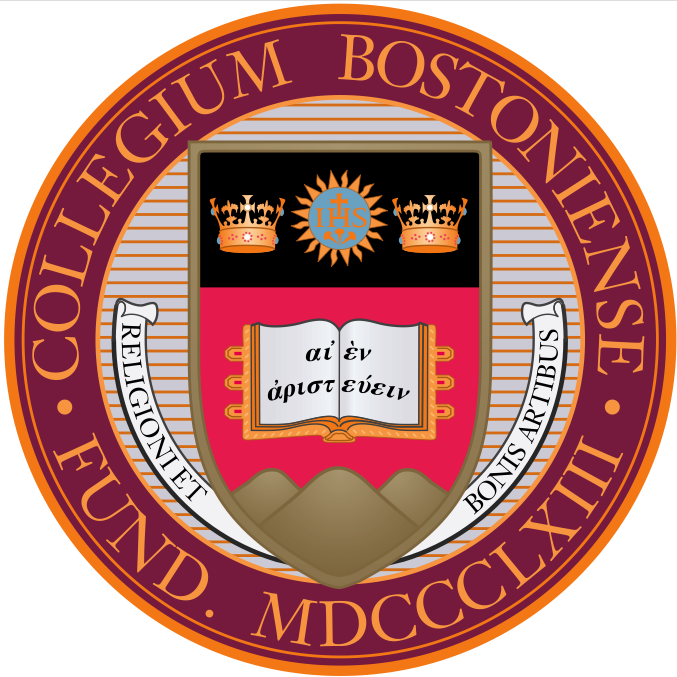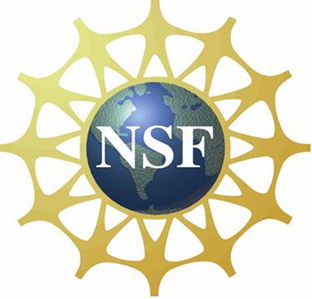Sponsored by

Boston College

HMI

NSF
|
The 5th William
Rowan
Hamilton Geometry and
Topology Workshop
September 17-19, 2009
The Hamilton Mathematics
Institute,
Trinity College Dublin
Computational
and Algorithmic Geometry
Schedule of Talks
All talks will be held in the Maxwell Lecture Theatre in the Hamilton
Building, TCD (see campus map).
Time
|
Speaker
|
Talk
|
Thursday
|
|
9.30
- 10.30
|
Nathan
Dunfield (Urbana-Champaign)
|
Practical solutions
to hard problems in 3-dimensional topology |
10.30-10.45
|
COFFEE
|
10:45
- 11:45
|
Pat
Hooper (Northwestern)
|
Symmetries of
Generalized Staircases
|
11:45
- 1:30
|
LUNCH |
1:30
- 2:30
|
Karen
Vogtmann (Cornell)
|
Outer automorphism
groups of right-angled Artin groups |
2:45
- 3:45
|
János
Pach (CUNY and Renyi Inst.) |
Towards a theory of
topological graphs
|
4:00
- 5:00
|
David
Eppstein (Irvine) |
Hyperconvexity and
metric embedding |
Friday
|
|
| 9:30
- 10:30 |
Robert Meyerhoff (Boston College)
|
Computer-Aided
Analysis of Hyperbolic 3-Manifolds |
10.30 - 10.45
|
COFFEE
|
| 10:45
- 11:45 |
Mikhail
Belolipetsky (Durham)
|
Some computational
problems from geometry of lattices |
| 11:45
- 1:30 |
LUNCH |
| 1:30
- 2:30 |
Walter Neumann (Barnard)
|
Quasi-isometry of
3-manifold groups |
| 2:45
- 3:45 |
Volodymyr
Nekrashevych (Texas A&M) |
Automata and
topological models of expanding dynamical systems |
| 4:00
- 5:00 |
Tara
Brendle (Glasgow)
|
The symmetric
Torelli group |
Saturday
|
|
| 9:30
- 10:30 |
Tim
Riley (Cornell)
|
Hydra Groups |
10.30 - 10.45
|
COFFEE
|
| 10:45
- 11:45 |
Abigail Thompson (Davis)
|
Knots in a
(surface)x I and generalized Property R |
11.45 - 1.30
|
LUNCH
|
1.30 - 2.30
|
Jon McCammond (Santa
Barbara) |
Braid groups and
buildings |
2.45 - 3.45
|
Alexander Coward
(Oxford)
|
Upper bounds on
Reidemeister moves |
| END OF
WORKSHOP |
Abstracts
Speaker: Misha Belolipetsky (Durham)
Title: Some computational problems from geometry of lattices.
Abstract: I will discuss a number of concrete problems which come from
my previous work on geometry and arithmetic of lattices in semisimple
Lie groups.
Speaker: Tara Brendle (Glasgow)
Title: The symmetric Torelli group
Abstract: We will discuss the subgroup of the mapping class group
of a surface consisting of those elements which act trivially on
homology and which also commute with a fixed hyperelliptic
involution. This
group can also be viewed as a certain kind of "pure" braid group.
Motivated
by a conjecture of Hain on the generation of this group, we will
discuss how the symmetric viewpoint leads to interesting new relations
in the full Torelli group. If time permits, we will
also discuss a theory of "symmetric homology" which provides an
approach to Hain's conjecture.
This is joint work with Dan Margalit.
Speaker: Alex Coward (Oxford)
Title: Upper bounds on Reidemeister moves
(Joint work with Marc Lackenby)
Abstract: Given any two diagrams of the same knot or link, we provide
an explicit upper bound on the number of Reidemeister moves required to
pass between them in terms of the number of crossings in each diagram.
This provides a new and conceptually simple solution to the equivalence
problem for knot and links.
Speaker: Nathan Dunfield (Urbana-Champaign)
Title: Practical solutions to hard problems in 3-dimensional topology.
Abstract: Many fundamental problems in 3-dimensional topology are
known to be algorithmically solvable, using tools ranging from normal
surface theory to hyperbolic geometry. However, most of
these algorithms are too slow to be of use in any interesting example,
and in fact some of these problems are known to be NP-hard or
worse. I will discuss other methods, based on various
heurisitics, randomization, and hyperbolic geometry, which can
effectively solve some of these problems in practice.
Particular questions of interest will be whether a 3-manifold
fibers over the circle, its Heegaard genus, and the rank of its
fundamental group. I will conclude with a brief
demonstration of SnapPea, a modern Python interface to Jeff Weeks
SnapPea.
This is joint work with (separately) Dinakar Ramakrishnan, Helen
Wong, and Marc Culler.
Speaker: David Eppstein (Irvine)
Title: Hyperconvexity and metric embedding
Abstract: A metric is hyperconvex if its metric balls satisfy the Helly
property: any pairwise intersecting family of balls has a common
intersection. Examples of hyperconvex spaces include trees, and vector
spaces with the L-infinity norm. We survey results related to
hyperconvex spaces and the tight span, an embedding of an arbitrary
metric space into a hyperconvex space that is closely related to
rectilinear convex hulls. We describe how to use tight spans and
hyperconvexity to efficiently find embeddings of distance matrices into
the Manhattan plane and into star metrics.
Speaker: Pat Hooper (Northwestern)
Title: Symmetries of Generalized Staircases
Abstract: A translation surface is a surface built by gluing polygonal
subsets of the plane together by translations. An affine automorphism
of a translation surface is a homeomorphism which preserves the
underlying affine structure
underlying the translation surface structure. We study properties of
the affine automorphism groups of periodic translation surfaces
(surfaces equipped with an action of Z by translations). I will also
explain why these groups are relevant to the study of geometric and
dynamical properties of these surfaces. This is joint work with Barak
Weiss.
Speaker: Jon McCammond (Santa Barbara)
Title: Braid groups and buildings.
Abstract: In this talk I will survey several results about braid groups
(and their generalizations such as Artin groups) and the
building-like geometric structures on which they act.
Speaker: Robert Meyerhoff (Boston College)
Title: Computer-Aided Analysis of Hyperbolic 3-Manifolds
Abstract: Some important, recent theorems about hyperbolic
3-manifolds (e.g., that the Weeks manifold is the minimum volume
hyperbolic 3-manifold) have made fundamental use of computers in their
discovery and proof. We will discuss some of these uses of the
computer.
Speaker: Volodymyr
Nekrashevych (Texas A&M)
Title: Automata and topological models of expanding dynamical systems
Abstract: We will describe a notion of a topological automata, which
can be used
to construct converging approximations of the Julia set of an expanding
dynamical system. Some examples from multi-dimensional holomorphic
dynamics will be discussed.
Speaker: Walter Neumann (Barnard College)
Title: Quasi-isometry of 3-manifold groups
Abstract: The program, started in the early 90's, of classifying
3-manifold groups up to quasi-isometry, is now almost complete; the
only cases remaining are some with "too many" arithmetic hyperbolic JSJ
components. The non-geometric case will be described. The
classification is in terms of equivalence classes under "bisimilarity"
(a concept from computer science) of weighted graphs. (Joint work with
Jason Behrstock.)
Speaker János Pach (City College, New York and Renyi Institute,
Budapest)
Title: Towards a theory of topological graphs
Speaker: Tim Riley
Title: Hydra Groups
Abstract: I will describe a family of groups that are CAT(0),
1-relator, and free-by-cyclic, and yet have free subgroups of
extraordinary (Ackermannian) distortion. This wild geometry, in
an apparently benign setting, has its origins in a simple computational
game --- a realisation of Hercules' battle with the hydra, played out
in string rewriting. This is work with Will Dison.
Speaker: Abigail Thompson (UC Davis)
Title: Knots in a (surface)x I and generalized Property R
Abstract: We examine surgery on knots in 3-manifolds with a natural
product structure and relate it to manifolds that can be obtained by
surgery on 2-component links in the 3-sphere. This is joint work
with Martin Scharlemann.
Speaker: Karen Vogtmann (Cornell)
Title: Outer automorphism groups of right-angled Artin groups.
Abstract: Free groups and free abelian groups are examples
of right-angled Artin groups, and in general right-angled Artin
groups can
be though of as interpolating between these two extremes. The
outer automorphism groups of free groups (Out(F_n)) and of free abelian
groups (GL(n,Z)) have been extensively studied and been shown to
have many properties in common; for example they are
finitely-presented, have torsion-free subgroups of finite index, are
residually finite, and satisfy the Tits alternative restricting the
types of
subgroups they contain. We investivate which of these
properties are
in fact shared by the outer automorphism groups of all right-angled
Artin groups. This is joint with Ruth Charney.
|
|

